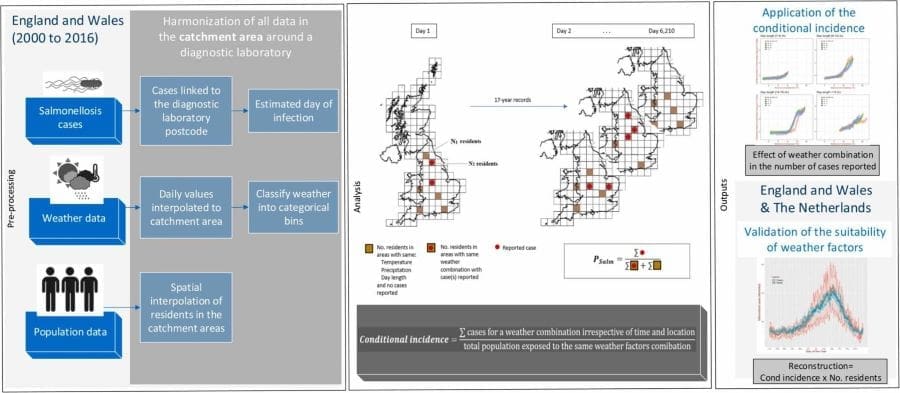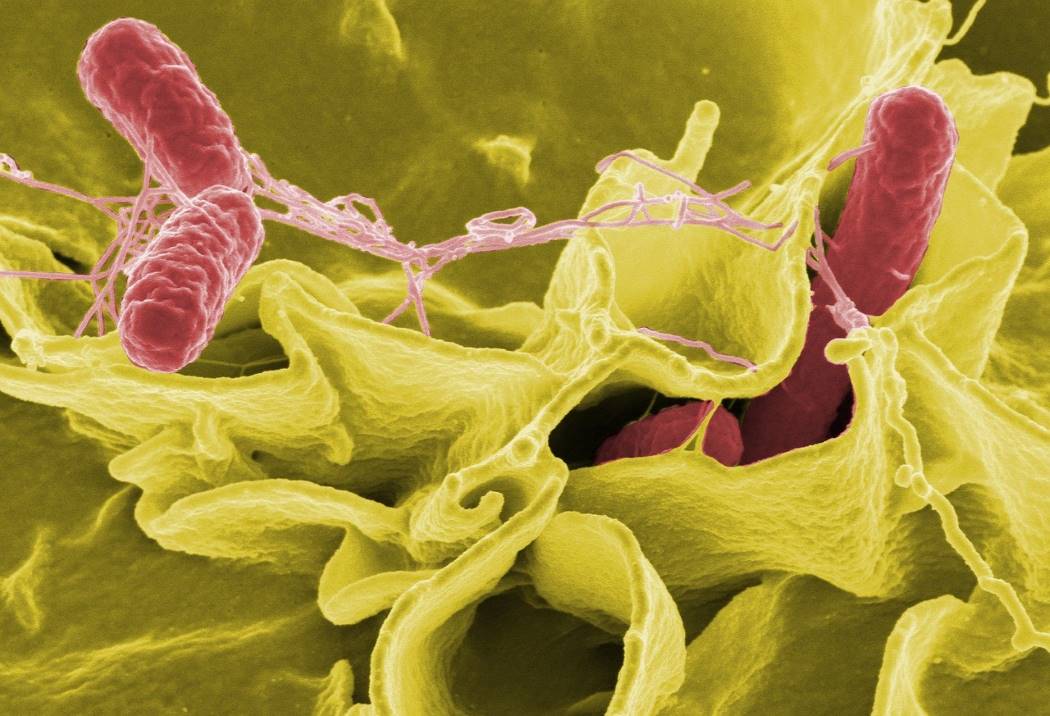Rising temperatures and changing weather patterns are increasing the risk of Salmonella outbreaks, according to new research from the University of Surrey.
Summary:
The study, published in the Journal of Infection, analyzed data from England, Wales, and the Netherlands, linking key weather factors — such as warmer temperatures, higher humidity, and longer daylight hours — to spikes in Salmonella cases.
Researchers found that temperatures above 10°C and dew points between 7-10°C significantly contributed to the spread of this foodborne illness. Salmonella, a leading cause of food poisoning in Europe, thrives in contaminated food and poor hygiene conditions, making climate-driven risks a growing concern.
The findings suggest that weather-based models could improve predictions of outbreaks and inform targeted public health interventions, especially as climate change continues to alter environmental conditions worldwide.

Climate change is impacting the spread of Salmonella, according to new research from the University of Surrey. This research follows previous work from the team, which found that weather change is leading to the spread of dangerous diarrheal illness.
The study, led by a team of researchers at Surrey’s School of Veterinary Medicine, investigated the impact of different weather factors on the transmission of Salmonella – a leading cause of foodborne illnesses in Europe, accounting for nearly one in three foodborne outbreaks.
Salmonella is a type of bacteria that can cause food poisoning. It’s found in the intestines of animals and humans and can contaminate food if it’s not cooked or handled properly. Salmonella can cause diarrhoea, fever, and stomach cramps, and it is most prominent in areas with poor sanitation and hygiene.
In the study researchers compared UK Health Security Agency (UKHSA) data of confirmed cases of Salmonella in England and Wales during 2000-2016 with Met Office data of the time, focusing on 14 different weather factors.
This provided a more holistic understanding, which considered the combined effect of multiple weather factors on incidences of Salmonella, leading to an in-depth description of the risk of salmonellosis when we know the local weather during the past days.
Warmer temperatures (above 10 degrees Celsius), relative humidity, dewpoint temperature (between 7-10 degrees Celsius), and longer days (over 12-15 hours) were identified as key weather factors associated with an increase in Salmonella cases, irrespective of geographical location. These findings were also validated by analysing data from the Netherlands.
Dr Gianni Lo Iacono, Senior Lecturer in Biostatistics and Epidemiology at the University of Surrey, said:
“The model we used to analyse the data shows promise, as the findings were replicated across England, Wales and, independently, in the Netherlands, suggesting a potential for wider application in other European and high-income countries to help gain new insights on the incidence of Salmonella. It would be interesting to investigate this in regions with very different environmental and socio-economic characteristics, like tropical countries.”
Dr Laura Gonzalez Villeta, the first author of the study and researcher at the University of Surrey, said:
“The study highlights how weather plays a significant role in Salmonella outbreaks and provides a valuable tool for predicting future risks and tailoring interventions, particularly in the context of climate change.”
Journal Reference:
Gonzalez-Villeta, Laura C. et al. ‘Identifying Key Weather Factors Influencing Human Salmonellosis: A Conditional Incidence Analysis in England, Wales, and the Netherlands’, Journal of Infection online, 106410 (2025). DOI: 10.1016/j.jinf.2025.106410
Article Source:
Press Release/Material by University of Surrey
Featured image credit: WikiImages | Pixabay




